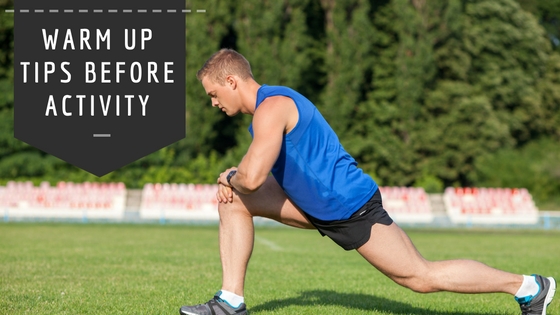Warm-Up Tips Before Vigorous Activity
Oct 7 Tips for Getting a Proper Warm-Up Before Vigorous Activity
Tips for Getting a Proper Warm-Up Before Vigorous Activity
Many of us have heard about the value of warming up before an activity, but what does that actually mean? What components does it entail? When should this be performed? Do I have to do this before every workout or physical activity? All of these are good questions.
It is important for injury prevention to prime the body before vigorous activity. We must get our body ready for the shock it is about to undergo with less-intense activity to increase blood flow. This allows important tissues and joints to be bathed with nutrients but with less-alarming stress to these structures.
- Static stretching should be reserved for after the completion of the desired activity because it has the ability to decrease body performance prior to a vigorous event. Research has shown that static stretching can inhibit the stretch reflex required to store kinetic energy (muscle output) within muscles during movement. Many articles published have demonstrated poorer results of requested activity (vertical jump, sprint) from static stretch groups when compared to a control group.
- Warm-ups should mimic the activity you plan to perform: a jog before interval running, for instance.
- A general rule is to warm up at least 10 minutes before any activity that you perceive as “somewhat hard” or a heart rate of 130 or more beats per minute. A less-rigorous activity does not severely stress the body and almost is a warm-up itself.
- The warm-up should be completed close enough to the actual event such that you do not return to a resting heart rate, but with enough time elapsed to allow some relaxation of the muscles.
- A good warm-up should include dynamic stretching — or stretches that include movement as opposed to static holds — after heart rate has increased. The idea is to simulate movements that you will be performing within the activity but in a slow, graded and progressive way. For example, walking lunges can increase stride length and elongate body tissue to prevent strain while performing the activity.
- Consider performing the activity in partial-practice at full speed once some priming has been completed. So if you are planning to race for 20 minutes, it would be ideal to run a few times at your intended speed for about 20 seconds each to get your body ready to perform at your desired level.
These small adjustments to your workout can help prevent injury and let you enjoy your activity for years to come.
